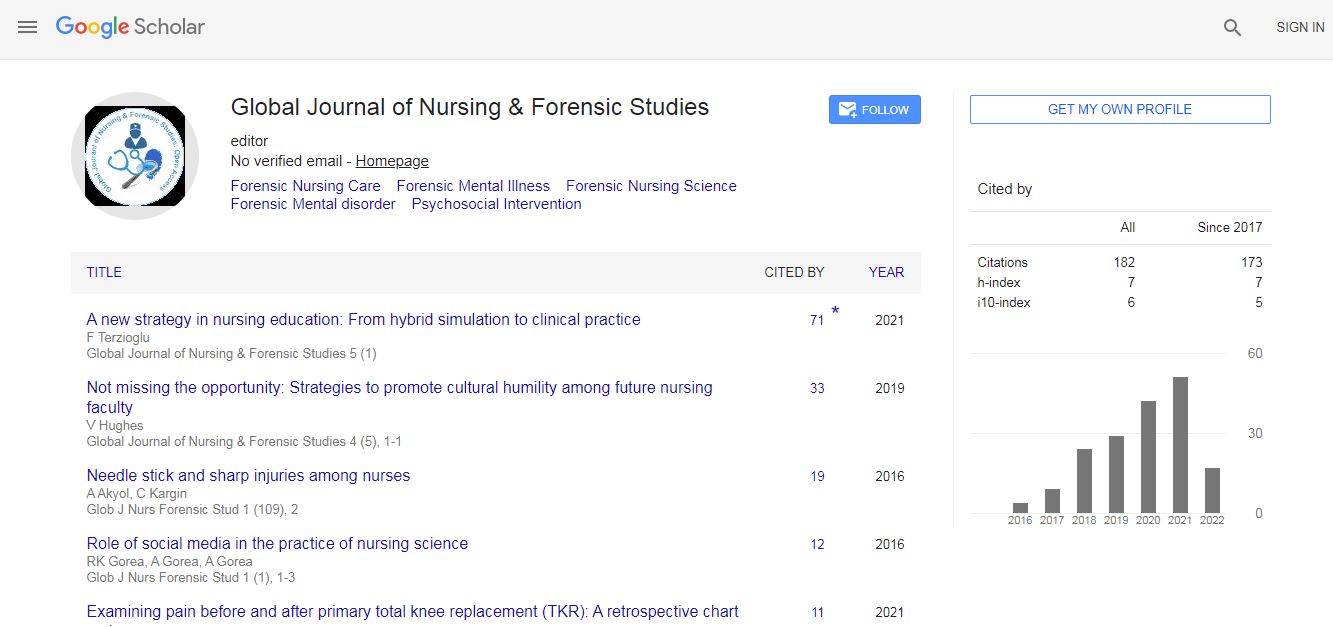Our Group organises 3000+ Global Conferenceseries Events every year across USA, Europe & Asia with support from 1000 more scientific Societies and Publishes 700+ Open Access Journals which contains over 50000 eminent personalities, reputed scientists as editorial board members.
Open Access Journals gaining more Readers and Citations
700 Journals and 15,000,000 Readers Each Journal is getting 25,000+ Readers
Google Scholar citation report
Citations : 82
Optometry: Open Access received 82 citations as per Google Scholar report
Indexed In
- Google Scholar
- RefSeek
- Hamdard University
- EBSCO A-Z
- Euro Pub
- ICMJE
Useful Links
Recommended Journals
Related Subjects
Share This Page
3D technology applied in the rehabilitation of patients with total or partial loss of the ocular globe
World Congress and Expo on Optometry & Vision Science
Marcela Felizzola Cristancho
University foundation san mart√?¬≠n. Company PROFEL S.A, Argentina
ScientificTracks Abstracts: Optom Open Access
Abstract
Objective: The objective of the study is to demonstrate the effectiveness of 3D technology in the ocular rehabilitation of patients with total or partial loss of the eyeball. Material & Methods: A prospective, unicentric clinical trial was conducted with patients with total and partial loss of the eyeball. In total, eight wells were studied, over a period of 15 months. These patients were initially evaluated with the protocol pre-established by Proofel and adapted with ocular prostheses made based on the topographic interpretation of the cavity (visualization technique and wax modeling of previous models), taking of quantitative and quantitative measurements, and evaluation of the three adaptation criteria: Mobility, symmetry and aesthetics and parameterization of the final devices. Once the patients were adapted, controls were performed, where the three adaptation criteria were evaluated again and once the stability of the adaptation was confirmed, the data collection stage was started for the three-dimensional reconstruction of the cavities under study, with the use of a high-tech scanner capable of capturing complex geometries, sharp edges, thin slits and with a resolution of up to 0.1mm, the necessary images were captured and then exported through files to a 3D design software where the computer aided design, which was subsequently printed by computer-aided manufacturing, making this impression the future prosthesis model for each patient. We then performed an analysis of the parameters of the devices in use and those obtained by 3D printing; we also applied a survey that allowed us to compare the two techniques from the patient's appreciation. Results: Patient-friendly, objective, reliable, comfortable, zero contact technology with minimal exposure time to collect precise information about the cavity, for use in all types of patients with total or partial loss of the eyeball. Conclusions: 3D technology is the current technology that gives the possibility of disintegrating the manufacturing and the adaptation process because it is effective and effective, for the three-dimensional obtaining of the cavity form of patients with total or partial loss of the globe ocular, allows to design a device personalized computer aided and to measure real, that satisfies the exigencies of that cavity, being reflected in a natural adaptation that fulfills the three criteria of adaptation.Biography
Ophthalmologist at Fundacion Universitaria San Martin, Colombia.
Email: marcefel@hotmail.com

 Spanish
Spanish  Chinese
Chinese  Russian
Russian  German
German  French
French  Japanese
Japanese  Portuguese
Portuguese  Hindi
Hindi 